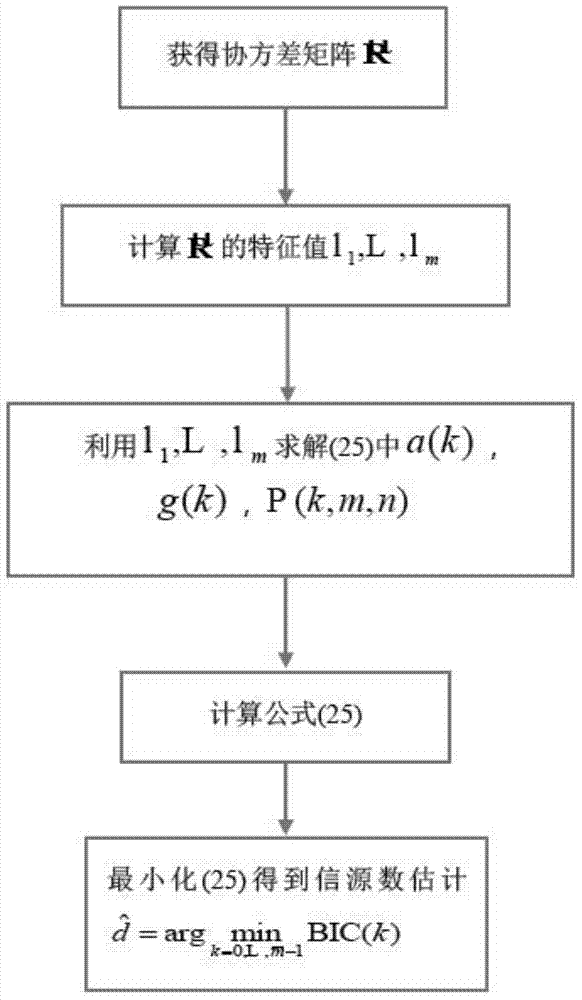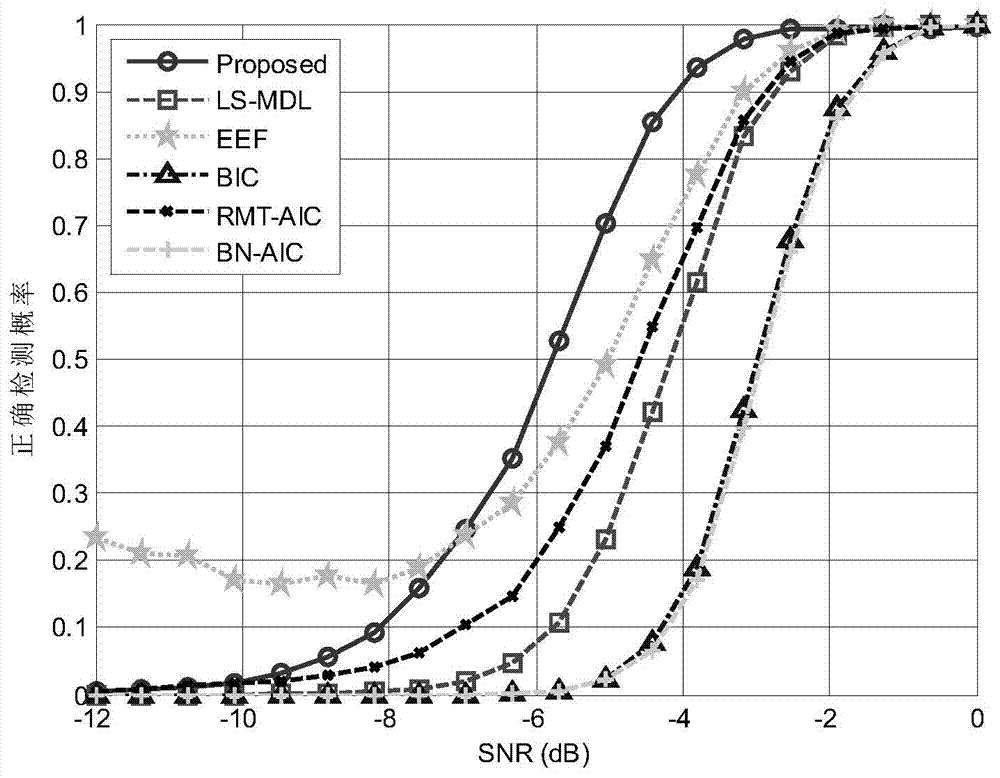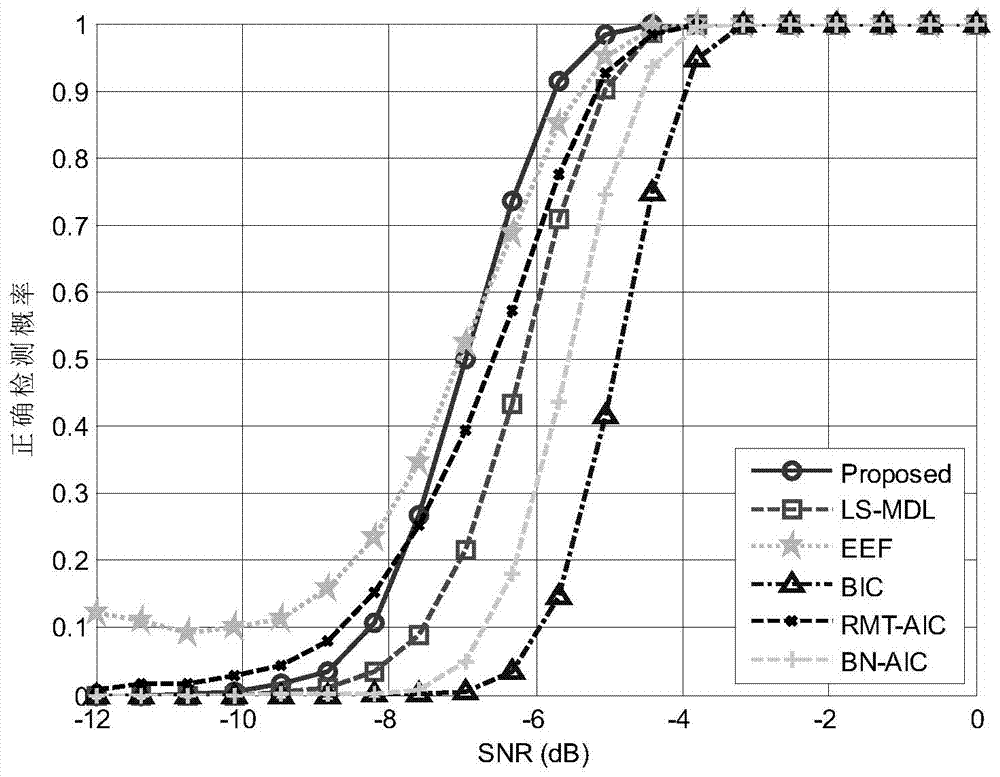Source number estimation method based on Bayesian Information Criterion
A technique for the number of sources and criteria, which is applied in the field of signal processing and can solve problems such as the inability to guarantee the correctness of the estimated number of sources.
- Summary
- Abstract
- Description
- Claims
- Application Information
AI Technical Summary
Problems solved by technology
Method used
Image
Examples
Embodiment Construction
[0028] The present invention will be further described below in conjunction with the accompanying drawings and specific embodiments.
[0029] Consider a uniform linear array with m array elements, and there are d far-field narrowband signals (s 1 (t), L, s d (t)} from different directions incident to the array, assuming that the source and the array are in the same plane, then at the tth snapshot, the output of the array can be expressed as
[0030] x t =As t +w t , (t=1, L, n) (1)
[0031] where x t =[x 1 (t), L, x m (t)] T ∈? m×1 , the s t =[s 1 (t), L, s d (t)] T ∈? d×1 ,w t =[w 1 (t), L, w m (t)] T ∈? m×1 Denote the observation vector, array manifold (steering matrix), signal vector and noise vector, respectively. in, d is the direction of arrival of the i-th source Corresponding steering vector, ( ) T Indicates the transpose operation, d is the number of unknown sources, m is the number of antennas, and n is the number of snapshots. For simpl...
PUM
 Login to View More
Login to View More Abstract
Description
Claims
Application Information
 Login to View More
Login to View More - R&D
- Intellectual Property
- Life Sciences
- Materials
- Tech Scout
- Unparalleled Data Quality
- Higher Quality Content
- 60% Fewer Hallucinations
Browse by: Latest US Patents, China's latest patents, Technical Efficacy Thesaurus, Application Domain, Technology Topic, Popular Technical Reports.
© 2025 PatSnap. All rights reserved.Legal|Privacy policy|Modern Slavery Act Transparency Statement|Sitemap|About US| Contact US: help@patsnap.com



